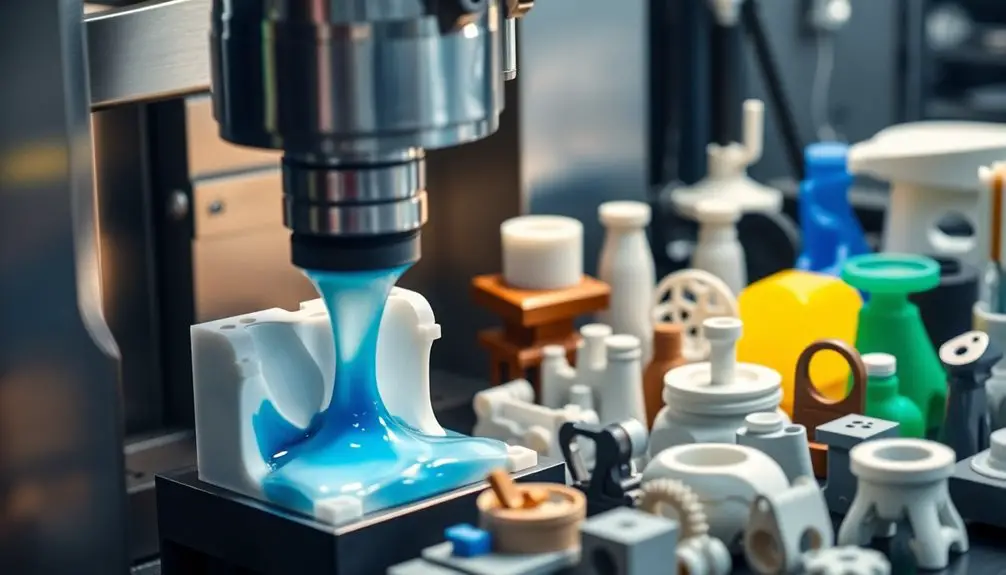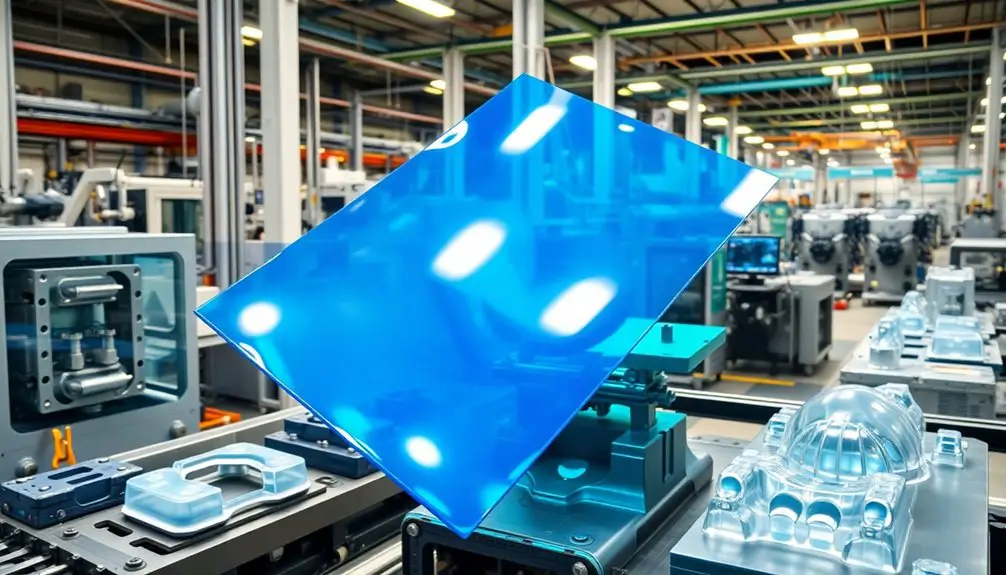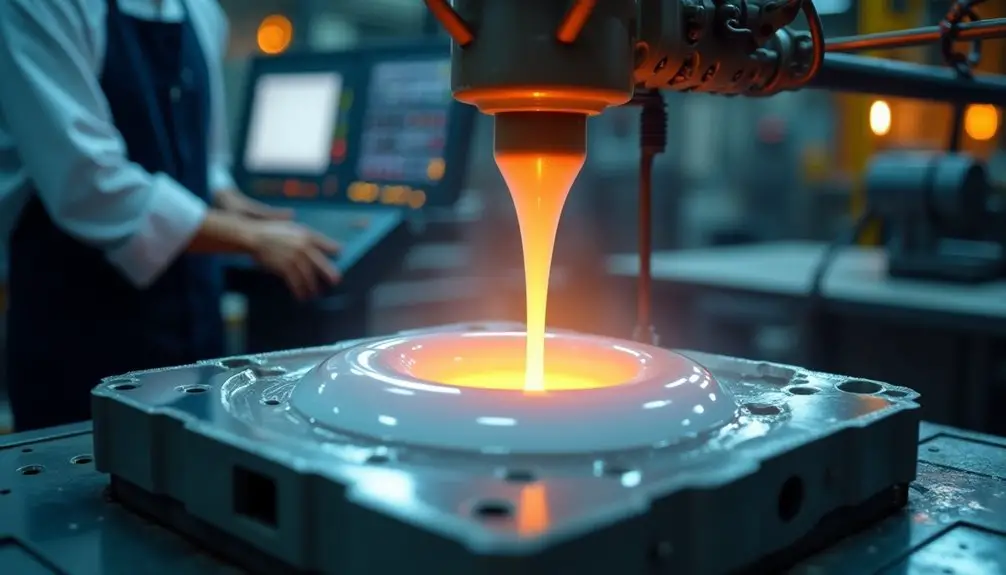You can effectively form polypropylene using a variety of shaping techniques that cater to different applications. Start with thermoforming, which involves heating sheets until they're malleable, then using methods like vacuum or pressure forming for precise shapes. Injection molding is ideal for producing complex designs, while extrusion molding creates continuous shapes. Blow molding lets you expand molten polypropylene into molds for hollow products. Each method showcases polypropylene's versatility, making it perfect for food packaging, automotive parts, and medical devices. Keep exploring these techniques, and you'll uncover even more possibilities for working with this adaptable material.
Key Takeaways
- Thermoforming heats polypropylene sheets until malleable, ideal for creating custom shapes through vacuum or pressure forming techniques.
- Injection molding melts polypropylene and injects it into molds, suitable for producing complex shapes and high-volume production.
- Extrusion molding forces heated polypropylene through a die, creating continuous shapes for applications like piping and sheets.
- Blow molding uses high-pressure air to expand molten polypropylene in molds, commonly used for containers and hollow products.
- Calendering presses heated rollers to produce thin sheets or films, effective for applications requiring flexible and lightweight materials.
Overview of Polypropylene
Polypropylene (PP) is a versatile thermoplastic polymer that's become essential in various industries since its creation in 1951. Known for its high melting point of around 160°C, polypropylene withstands high temperatures while maintaining its structural integrity. This characteristic, combined with its excellent chemical resistance, makes PP ideal for a wide range of applications, including medical devices and food packaging.
You'll appreciate how lightweight and flexible polypropylene is, which enhances its usability in manufacturing automotive components, household items, and textiles. Its low water absorption further contributes to its appeal, ensuring that products made from this polymer remain durable over time.
In today's eco-conscious world, polypropylene stands out as a recyclable material, classified under recycling code #5. This makes it a popular choice for sustainable manufacturing practices. Polypropylene's desirable properties also make it a suitable substitute for other plastics, like High-Density Polyethylene (HDPE), due to its high melting point and resistance to chemicals.
As you explore the various applications and benefits of polypropylene, you'll see why it's the second most widely used plastic globally, following polyethylene. Whether you're involved in production or just curious about materials, understanding polypropylene's properties and uses is crucial.
Thermoforming Techniques
The art of thermoforming allows manufacturers to create intricate and functional shapes from polypropylene sheets through a straightforward yet effective process.
In thermoforming, you heat polypropylene sheets until they become malleable, then shape them against molds using various techniques. One of the simplest methods is vacuum forming, which utilizes a high-powered vacuum to draw heated polypropylene tightly against a mold. This technique is perfect for producing large, simple shapes like trays and dashboards.
For more detail and accuracy, pressure forming is the go-to method. By using high-pressure air to push the heated polypropylene against the mold, you can create precise components suitable for medical equipment and scientific instruments.
If you need durable, double-walled products, consider twin-sheet forming, where two sheets of polypropylene are heated and fused together, ideal for applications requiring structural strength, like air ducts and bed liners.
Thermoforming stands out for high-volume production of thin-walled plastic products, leading to reduced material waste compared to traditional molding methods.
Injection Molding Process

When you think about producing complex and precise components, injection molding often comes to mind as a go-to method. This manufacturing process involves melting polypropylene (PP) and injecting it into a double-sided mold under high pressure. You can create intricate designs and high-precision components efficiently, making it ideal for small to medium-sized parts.
With injection molding, you can produce complex shapes and varying thicknesses, which is particularly useful in industries like automotive and medical devices. While the upfront costs and lead times may be higher compared to other methods, the process proves economically advantageous for high-volume production due to lower per-unit costs.
Polypropylene's high melting point and excellent fatigue resistance make it suitable for applications requiring durability and strength. This includes living hinges and snap-fit assemblies, ensuring your products last under stress.
Whether you're crafting automotive components or household products, injection molding offers versatility across various applications. If you're looking to achieve high durability and precision in your projects, injection molding with polypropylene is often the best choice.
Polypropylene products also exhibit better resistance to PVC piping alternatives, making them suitable for a wide range of applications.
Other Shaping Methods
While injection molding is a popular choice for high-precision components, several other shaping methods effectively process polypropylene. Each method has unique characteristics that can suit different design features and applications.
- The versatility of polypropylene allows for creative possibilities.
- The efficiency of these processes can save you time and resources.
- You'll appreciate the quality and durability of the final products.
The thermoforming process, including both vacuum forming and pressure forming, heats polypropylene sheets until they become pliable. This allows you to mold them into various shapes for consumer goods and packaging.
When using the vacuum forming process, a sheet is drawn into a mold, while pressure forming is used to create more complex designs by applying pressure to the sheet.
Extrusion molding is another technique where heated, molten polypropylene is forced through a die, resulting in continuous shapes ideal for pipes and sheets.
Blow molding shapes polypropylene by injecting it into a mold and using high-pressure air to expand it, making it great for hollow containers.
Lastly, calendering presses heated polypropylene through rollers, creating thin sheets or films for flexible applications.
Each method showcases the adaptability of polypropylene as a thermoplastic polymer, and they offer alternatives to materials with higher environmental impact, such as PVC alternatives.
Applications of Polypropylene

Utilizing polypropylene in various industries highlights its versatility and practicality. One of the most significant applications of polypropylene is in food packaging. Its safety, durability, and resistance to moisture and chemicals make it an ideal choice for containers and wrappers. However, consumers should note the importance of using BPA-free plastics, like polypropylene, to reduce chemical leaching and potential health risks associated with food packaging.
In manufacturing, polypropylene shines as a lightweight material for automotive components, such as dashboards and bumpers, where impact resistance is crucial.
The medical field also benefits from polypropylene's unique properties. You'll find it in devices and equipment that require steam sterilization and resistance to bacterial growth, ensuring safety and hygiene.
In the textile industry, polypropylene is used for carpets, upholstery, and nonwoven fabrics, valued for its low moisture absorption and durability.
Another interesting application is in the creation of living hinges, like those seen in ketchup lids and takeout containers. These hinges rely on polypropylene's flexibility and fatigue resistance, allowing for repeated use without breaking.
Frequently Asked Questions
What Is the Process of Shaping Polypropylene?
Shaping polypropylene involves several processes like injection molding, extrusion, blow molding, and thermoforming. Each method allows you to create specific shapes and designs, catering to various applications and product requirements effectively.
How to Form Polypropylene?
To form polypropylene, you can choose techniques like injection molding for intricate parts, extrusion for continuous shapes, blow molding for hollow items, or thermoforming for larger designs. Each method suits different needs and production scales.
Can You Reshape Polypropylene?
Yes, you can reshape polypropylene. By heating it to around 160°C, you can mold it into different forms. Just be cautious, as repeated heating may affect its strength and durability over time.
What Are the Different Types of Thermoforming?
There are several types of thermoforming techniques you can use, including vacuum forming, pressure forming, twin-sheet forming, thin-gauge, heavy-gauge, and drape forming. Each method suits different applications based on complexity and product requirements.

